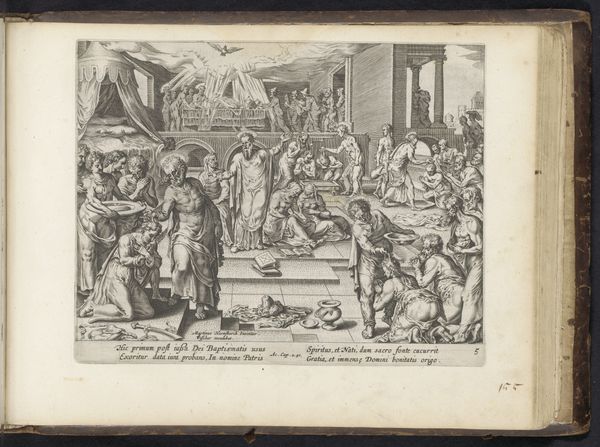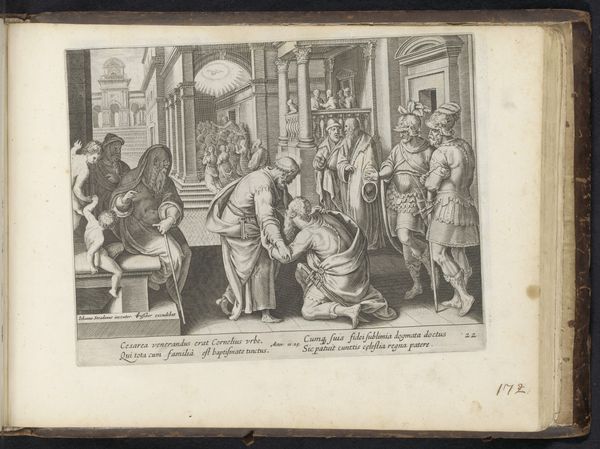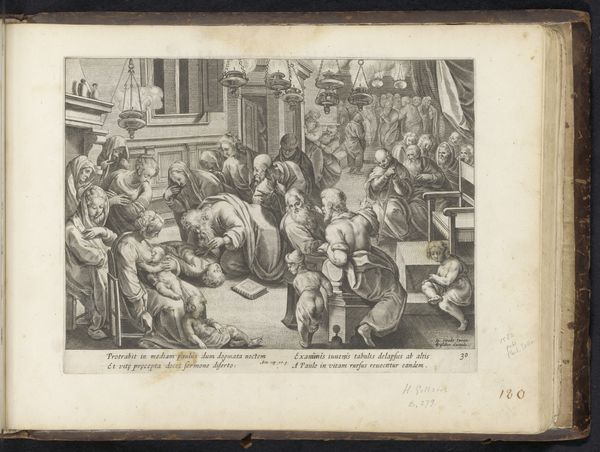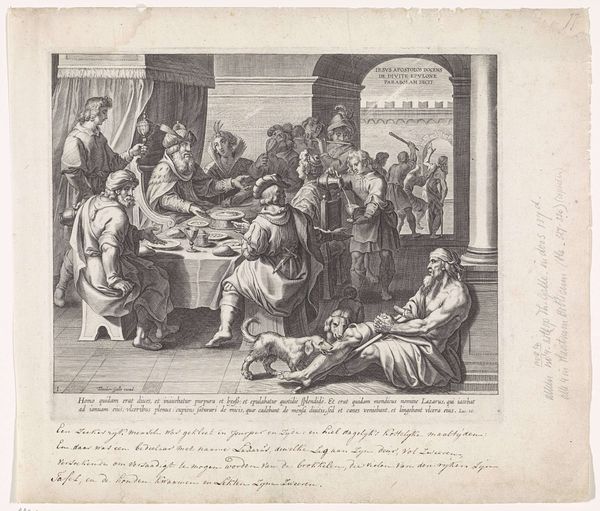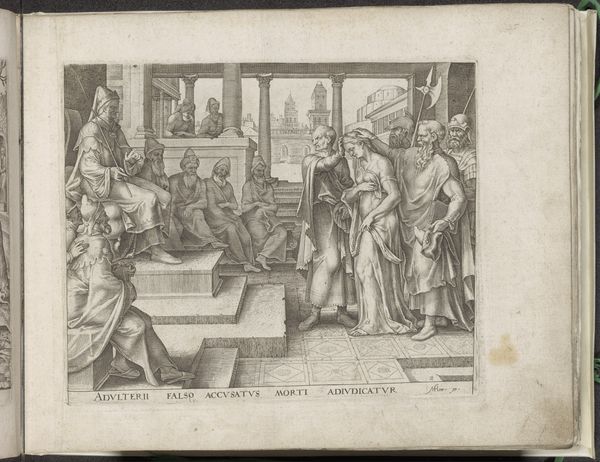
print, engraving
#
narrative-art
#
baroque
# print
#
figuration
#
genre-painting
#
engraving
Dimensions: height 212 mm, width 255 mm
Copyright: Rijks Museum: Open Domain
Editor: This engraving from 1646, titled "Lazarus Begging at the Rich Man's Feast," depicts quite the stark contrast in lifestyles. There's a revelry indoors and poverty at the entrance, which gives off such an unbalanced and uneasy mood. What symbols stand out to you? Curator: The image pulsates with symbolic tension, doesn't it? Notice the dogs licking Lazarus’ sores. Canines, throughout history, represent both loyalty and impurity. Here, are they offering comfort, or is their presence meant to amplify Lazarus's debasement in relation to the opulence inside? The feast itself is laden with visual cues of excess, standing in sharp contrast with the state of abject need just outside the door. Editor: That’s an interesting contradiction with the dogs; I hadn't considered them in that light before. So, the artist is intentionally playing with these double meanings? Curator: I believe so. Look at the costumes, the architectural framing of the scene, the specific gestures – everything contributes to a dense visual language. This wasn’t just about illustrating a biblical parable; it was about exploring societal hierarchies, moral responsibilities, and perhaps even a critique of earthly pleasures versus spiritual values. What echoes of meaning do you detect in it? Editor: Now that I consider it in terms of "visual language," it seems like the print holds so much more meaning beyond its surface! The deliberate choices become clear symbols pointing toward larger, timeless questions. Curator: Precisely. By understanding the symbolic register, we gain insight into the cultural memory encoded within these images and unlock a dialogue across centuries. Editor: Well, seeing these layers definitely gives me a lot to consider beyond the obvious. Thanks!
Comments
No comments
Be the first to comment and join the conversation on the ultimate creative platform.
